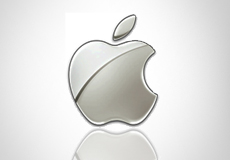Apple released a test version of its new programming language called Swift on June 2, and it is rapidly gaining popularity. Now developers for iPhone, iPad, and Mac apps can write code in an integrated development environment (IDE) and changes to the code can be added during a running process. The Playgrounds tool lets developers experiment with their code and learn new skills. Swift may well be on its way to becoming a mainstream coding language.
 Currently, most iOS and OS X developers use a programming language known as Objective-C. However, Wired predicts that the thousands of developers for Apple products will make the switch to Swift because of the more standard syntax, the speed in compiling and executing code, the ease of learning Swift, and the tools that help with finding mistakes in code.
Currently, most iOS and OS X developers use a programming language known as Objective-C. However, Wired predicts that the thousands of developers for Apple products will make the switch to Swift because of the more standard syntax, the speed in compiling and executing code, the ease of learning Swift, and the tools that help with finding mistakes in code.
Swift is easy to learn because of the tools that allow developers to see the changes in real-time when they edit their code. Programmers experimenting with code do not have to recompile and restart the program when they edit their work. Instead, they will simply see their changes appear in their live software.
Also, the debugging tool and the inferred typing capability save programmers time because it helps them avoid mistakes.
“It’s more of a helpful language. It understands what you’re doing a little bit better and allows the computer to help you figure it out a bit better,” developer Mike Ash said. “It makes for a more productive programmer. It lets you get more done in less time.” Ash has 15 years of experience of building software for Apple products, and now he’s embracing Swift.
Thousands of people are expected to start using Swiift. Currently, it’s only available to a limited number of coders. Still, there are over 2,400 Swift projects on GitHub, the repository for open source software, and at its debut, the language ranks 16th on Tiobe’s list of the world’s most-discussed language.
“When it’s officially released this fall, it could achieve mass adoption with unprecedented speed, surpassing even the uptake of Sun Microsystems’ Java programming language and Microsoft’s C# in the late 1990s and early 2000s,” reports Wired.

No Comments Yet
You can be the first to comment!
Sorry, comments for this entry are closed at this time.